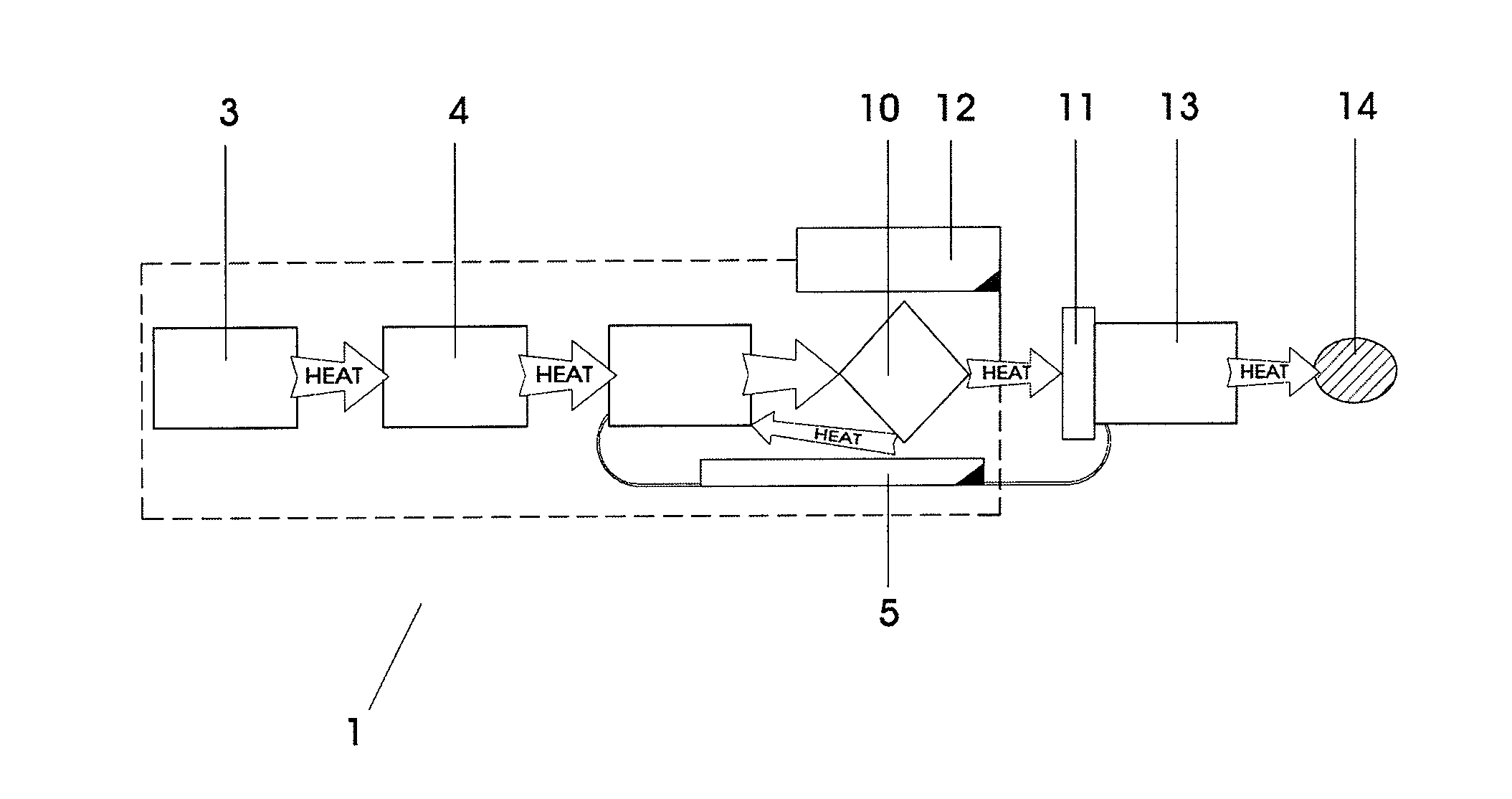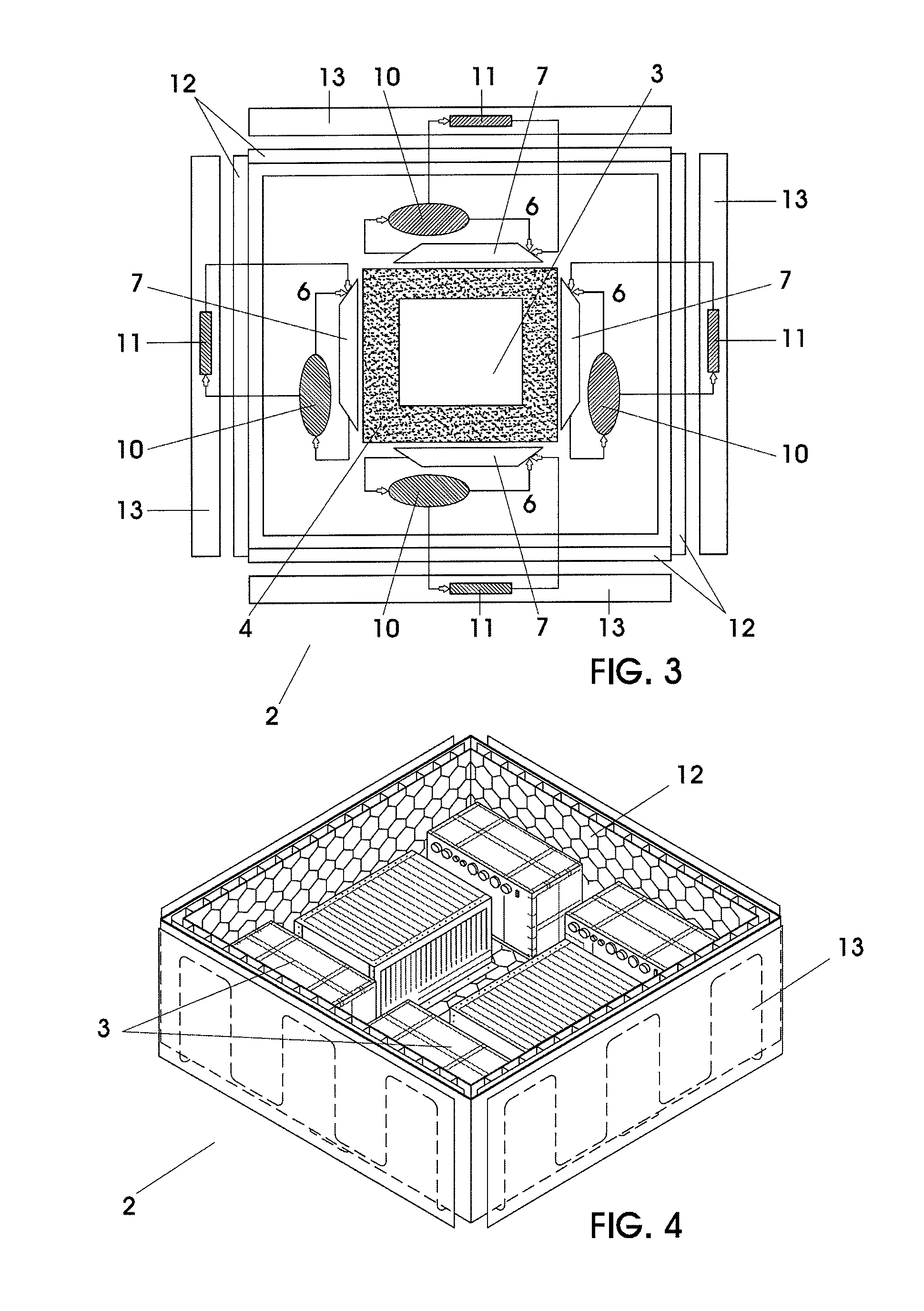Spacecraft modular thermal platform
a technology for spacecraft and thermal platforms, applied in indirect heat exchangers, lighting and heating apparatus, cosmonautic components, etc., can solve the problems of difficult to use for the thermal control of an entire spacecraft, power and cost impact, and difficult to achieve the thermal control of a small spacecraft. , to achieve the effect of reducing time, expenses and resources, and discharging excess hea
- Summary
- Abstract
- Description
- Claims
- Application Information
AI Technical Summary
Benefits of technology
Problems solved by technology
Method used
Image
Examples
Embodiment Construction
[0034]The invention is therefore intended to provide a spacecraft modular thermal platform 2 (SMTP) (FIG. 3) for controlling the thermal loads coming from a heat source 3, this platform 2 being modular and comprising at least one thermal module 1 (TM) (FIG. 1). The thermal module 1 comprises the following elements:[0035]at least one heat source 3, typically comprising onboard electronic equipment;[0036]a two-phase (liquid and vapor) loop system with a bypass line (TPBL) 5, comprising:[0037]a bypass line 6[0038]a thermal collector 7, preferably an evaporator[0039]transport lines 8, 9 for the two phases, vapor and liquid[0040]a heat flow regulator 10, preferably a pressure regulating valve[0041]a condenser 11;[0042]a thermal insulation system 12, such as Multi Layer Insulation (MLI);[0043]a heat rejection system 13, preferably comprising a radiator, and[0044]a heat sink 14, typically the space.
[0045]The thermal module 1 can also comprise an isothermalization system 4, this system 4 pr...
PUM
 Login to View More
Login to View More Abstract
Description
Claims
Application Information
 Login to View More
Login to View More - R&D
- Intellectual Property
- Life Sciences
- Materials
- Tech Scout
- Unparalleled Data Quality
- Higher Quality Content
- 60% Fewer Hallucinations
Browse by: Latest US Patents, China's latest patents, Technical Efficacy Thesaurus, Application Domain, Technology Topic, Popular Technical Reports.
© 2025 PatSnap. All rights reserved.Legal|Privacy policy|Modern Slavery Act Transparency Statement|Sitemap|About US| Contact US: help@patsnap.com



